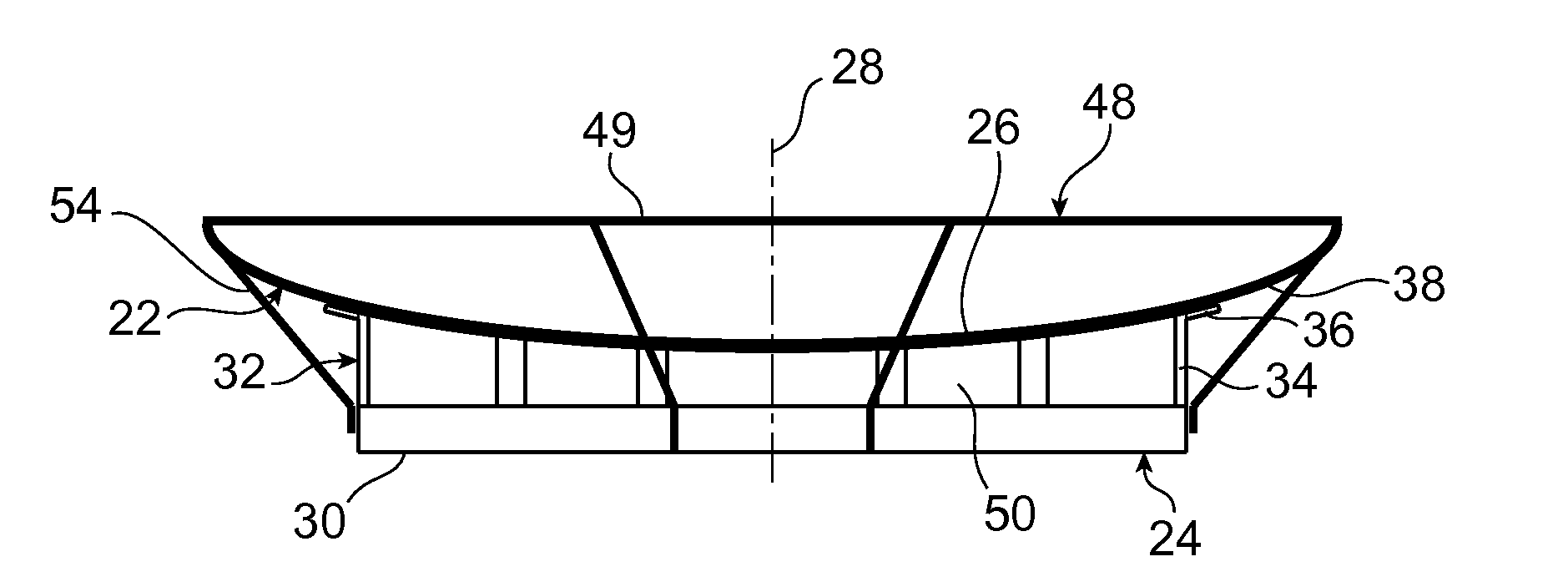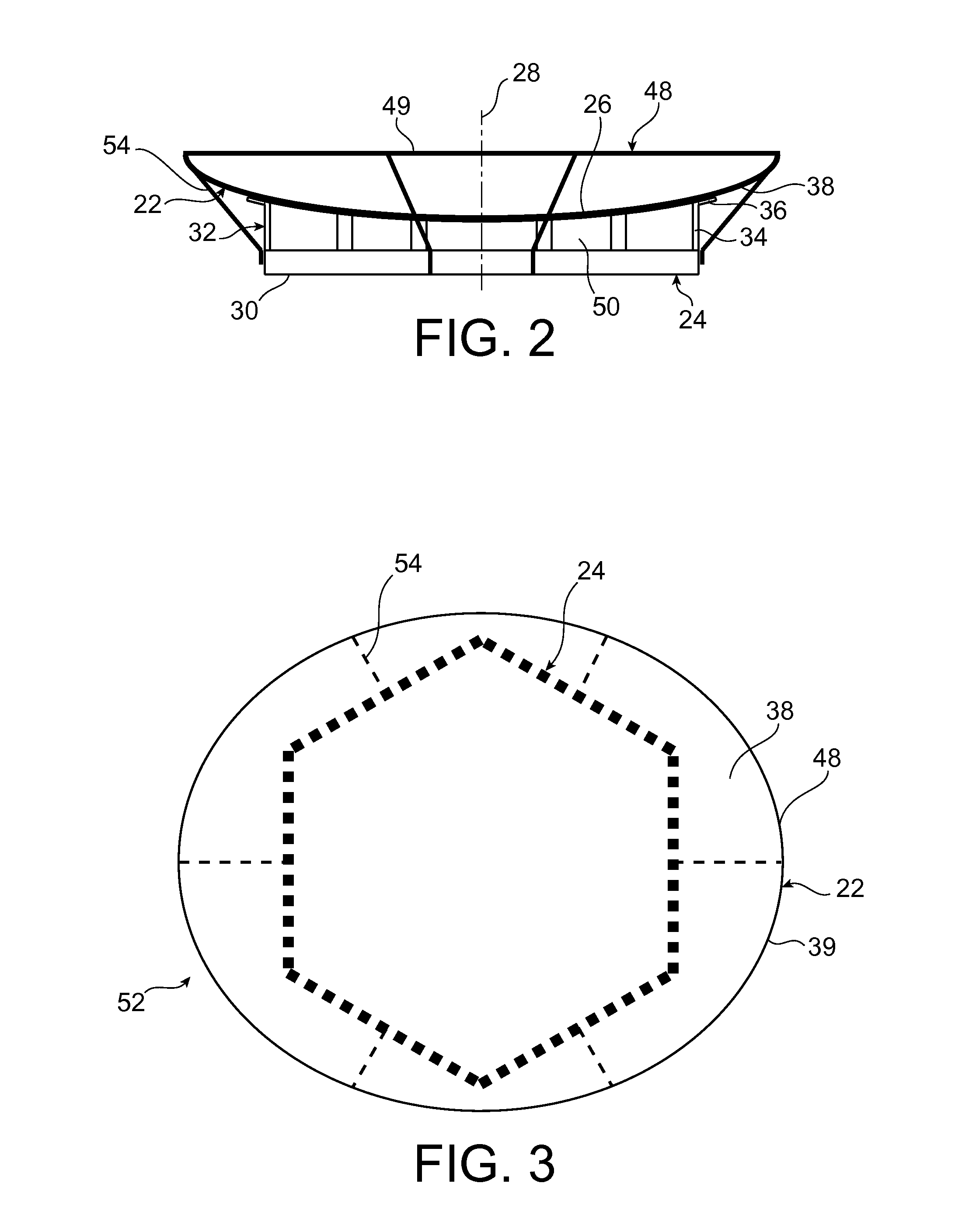Radio antenna including improved means of rigidification
a radio antenna and rigidification technology, applied in the direction of antennas, antenna details, electrical equipment, etc., can solve the problems of increased manufacturing precision, insufficient reflectivity properties of the type of reflector described above, and inability to meet the requirements of acoustic stress, etc., to achieve the effect of simple, economic and efficien
- Summary
- Abstract
- Description
- Claims
- Application Information
AI Technical Summary
Benefits of technology
Problems solved by technology
Method used
Image
Examples
Embodiment Construction
[0039]The invention will be better understood, and other details, advantages and characteristics of it will appear, on reading the following description given as a non-restrictive example, and with reference to the appended illustrations, in which:
[0040]FIG. 1, which has already been described, is a schematic perspective view of a radio antenna of a known type;
[0041]FIG. 1a, which has already been described, is a larger-scale view of detail Ia of FIG. 1;
[0042]FIG. 2 is a partial schematic view as an axial section of a radio antenna according to a preferred embodiment of the invention;
[0043]FIG. 3 is a partial schematic view from the front of the antenna of FIG. 2.
DETAILED DESCRIPTION OF A PREFERRED EMBODIMENT
[0044]FIGS. 2 and 3 represent a radio antenna 20 according to a preferred embodiment of the invention.
[0045]Antenna 20 includes a reflector 22 and a rear structure 24 supporting this reflector 22.
[0046]Reflector 22 includes a body 26 the general shape of which is that of a parab...
PUM
 Login to View More
Login to View More Abstract
Description
Claims
Application Information
 Login to View More
Login to View More - R&D
- Intellectual Property
- Life Sciences
- Materials
- Tech Scout
- Unparalleled Data Quality
- Higher Quality Content
- 60% Fewer Hallucinations
Browse by: Latest US Patents, China's latest patents, Technical Efficacy Thesaurus, Application Domain, Technology Topic, Popular Technical Reports.
© 2025 PatSnap. All rights reserved.Legal|Privacy policy|Modern Slavery Act Transparency Statement|Sitemap|About US| Contact US: help@patsnap.com



